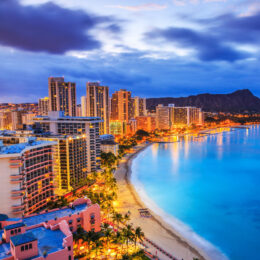That whole RFP process thing can be a tricky one and creating and packaging a successful RFP that attracts the attention of hotels is no easy feat.
Meeting planners need to bring their A-games when it comes to delivering outstanding RFPs.
Faced with a litany of items ranging from budget to dates to room blocks and more, meeting planners need to bring their A-games when it comes to delivering outstanding RFPs.
If you’re gearing up to source your next meeting and looking for a few insider tricks, you’ve come to the right spot. Kerry Clark, Global Account Manager for Smart Meetings 360 and dog mom to Mellie, chimes in on the daunting RFP process how to make your RFP most attractive to hotels.
Make Your RFP Stand Out
“First, it’s important to remember that hotels receive 8-10 RFPs per day and they look at them in their entirety. So, if you want your RFP to be successful, you have to make it stand out.” (Okay, make it the all-star-athlete-valedictorian-beauty-queen of RFPs. Got it.) But, exactly how do you do that?
When delivering a would-be successful RFP, meeting planners must be able to identify critical items relating to the success of their organization’s event. This can include budget, dates, room blocks, meeting space, production, concessions and more.
It’s All in the Details
As it turns out, the devil really is in the details. Kerry tells us, “Hotels want to see a clear, concise and detailed RFP.” Planners should have it laid out crystal clear and demonstrate a distinct vision of their goals and objectives.
Identify Your Budget
The next step in the RFP process is identifying your budget. Planners should ensure they have provided a realistic monetary range or risk a proposal that displays an unrealistic cost. Planners should communicate clearly, provide realistic ranges and set upper limits to ensure an attractive package.
#PlanningGoals made easy with a little advice from the pros.
Date Flexibility
Date flexibility is also a critical aspect to delivering a successful RFP. Demonstrating flexibility can save meeting planners a pretty penny, as well as a mountain of scheduling headaches. “Planners should understand that all destinations and venues have their own seasonality and low occupancy patterns,” says Kerry. They should also be on the lookout for high, off-peak and shoulder seasons, as well as competing events including citywides.
Concessions
In the world of meeting planning, we all know there are must-haves and nice-to-haves. Must-have items are critical to the success of an event and are considered to be non-negotiable. Planners should be transparent and up front about these needs and be prepared to itemize them clearly and succinctly. Nice-to-haves are items that meeting planners still value, but are willing to compromise on. Think requests, negotiable items and creative solutions.
So there you have it. #PlanningGoals made easy with a little advice from the pros.




